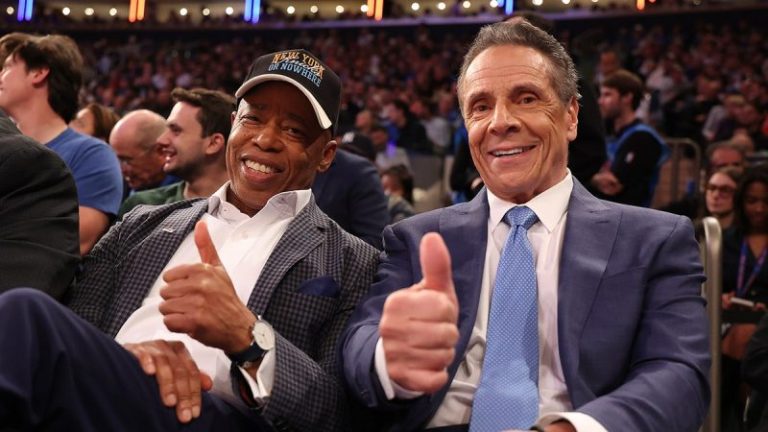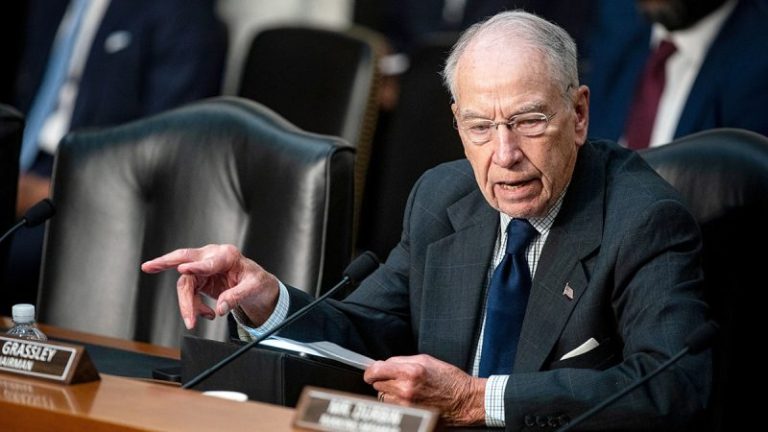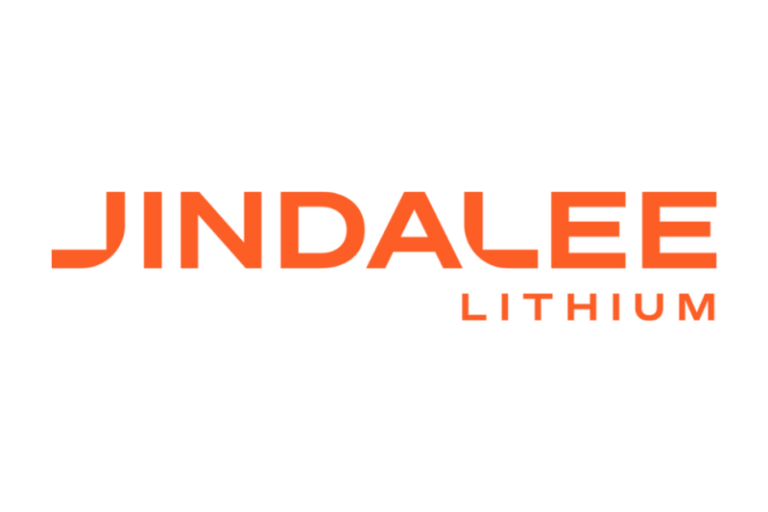Mayor Eric Adams formally endorsed former Gov. Andrew Cuomo to replace him as the next mayor of New York City on Thursday, less than one month after Adams suspended his re-election campaign.
The endorsement followed Wednesday night’s final mayoral debate, where Cuomo, who is running as an Independent, faced off against Democratic nominee Zohran Mamdani and Republican candidate Curtis Sliwa. Rather than speak to reporters after the debate, Cuomo dashed off to Madison Square Garden to watch the end of the New York Knicks game courtside with Adams.
‘I’m fighting for the family of New York,’ Adams said. ‘That’s why I’m here today, to endorse Andrew Cuomo, to be part of this fight, and I’m going to give him my all these next few days to make sure that Black and Brown communities, specifically, who have believed there’s nothing at stake in this election for them. It is.’
‘Am I angry that I’m not the one taking down Zohran, the socialist and the communist?’ Adams said, eliciting President Donald Trump’s moniker for Mamdani. ‘You’re darn right I am. But, you know what, the city means more to me than anything, and it is time for us as a family to come together.’
‘Today confirms what we’ve long known: Andrew Cuomo is running for Eric Adams’ second term,’ Mamdani said in a statement Thursday. ‘It’s no surprise to see two men who share an affinity for corruption and Trump capitulation align themselves at the behest of the billionaire class and the president himself. We are going to turn the page on the politics of big money and small ideas that these two disgraced executives embody and build a city every New Yorker can afford.’
Mamdani reiterated his criticism of the endorsement during a campaign event in Manhattan on Thursday.
‘We also know that this is the art of the deal,’ Mamdani said before adding, ‘We know that in a moment when New Yorkers are looking for an answer to the authoritarianism that we’re seeing from Washington, D.C., they don’t want the continuation of making City Hall into an embassy of that same administration.’
Adams has aligned with Trump since he was elected in November, visiting both Mar-a-Lago and the White House. Trump’s Justice Department dropped bribery, wire fraud and conspiracy charges against Adams earlier this year.
Gov. Kathy Hochul, D-N.Y., weighed removing Adams from office following a slew of City Hall resignations after Adams’ case was dropped. Hochul has since endorsed Mamdani’s campaign, although Mamdani has yet to endorse Hochul’s re-election campaign.
Pressure had been mounting since Mamdani won the Democratic primary for Adams or Cuomo to drop out of the race to consolidate support against Mamdani.
‘The mayor put his own personal ambition and ego aside to make sure he’s doing everything he can to make sure that New York remains New York,’ Cuomo said Thursday.
Adams announced he was suspending his campaign in a video on Sunday, Sept. 28, prompting the leading mayoral candidates to sharpen their political jabs against each other.
Similar pressure from billionaires, including Red Apple Media CEO John Catsimatidis and hedge fund CEO Bill Ackman, has intensified this week for Sliwa to drop out of the race in order to clear a pathway to victory for Cuomo.
The Democratic nominee, who handily defeated Cuomo in the primary, elicited Adams’ own words against the former governor in the days after he suspended his re-election campaign.
‘Even hearing Eric Adams, the way that he described Andrew Cuomo as a snake and a liar, is something that I’ve heard from a number of New Yorkers in wanting to turn that page,’ Mamdani said.
While Adams and Cuomo have had their fair share of disagreements, the Democrats agreed on Thursday that Mamdani should not become the next mayor of New York City. Adams addressed his own criticism of Adams during the announcement Thursday.
‘He called me names. But you know what? Now it’s time to fight for the family, and I’m going to fight for the family with Andrew Cuomo as the next mayor of the city of New York,’ Adams said.
The latest Fox News survey, conducted Oct. 10-14, ahead of the first general election debate last week, revealed that Mamdani has a substantial lead in the race. According to the poll, Mamdani has a 21-point lead among New York City registered voters with 49% of voters backing Mamdani, while 28% go for Cuomo and 13% favor Sliwa.
Mamdani also rose above the 50% threshold among likely voters, garnering 52% support, while Cuomo picked up 28%, and Sliwa received just 14%.
But as Mamdani, ever the social media-savvy candidate, warned his followers on Wednesday, it was Cuomo who was the favorite to win the nomination just weeks before the Democratic primary.
By consolidating support with New York City Comptroller Brad Lander, and cross-endorsing each other to topple Cuomo through ranked-choice voting, Mamdani pulled off the political upset that has since landed him on the national stage.










